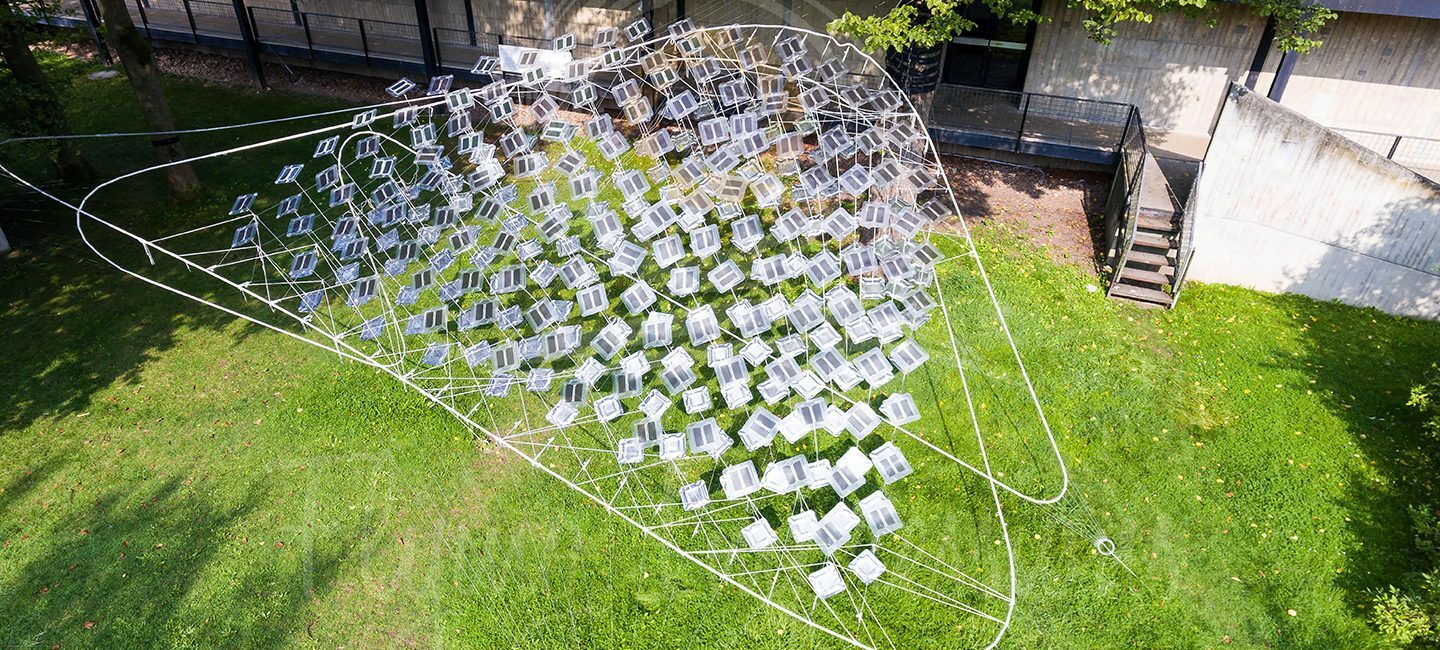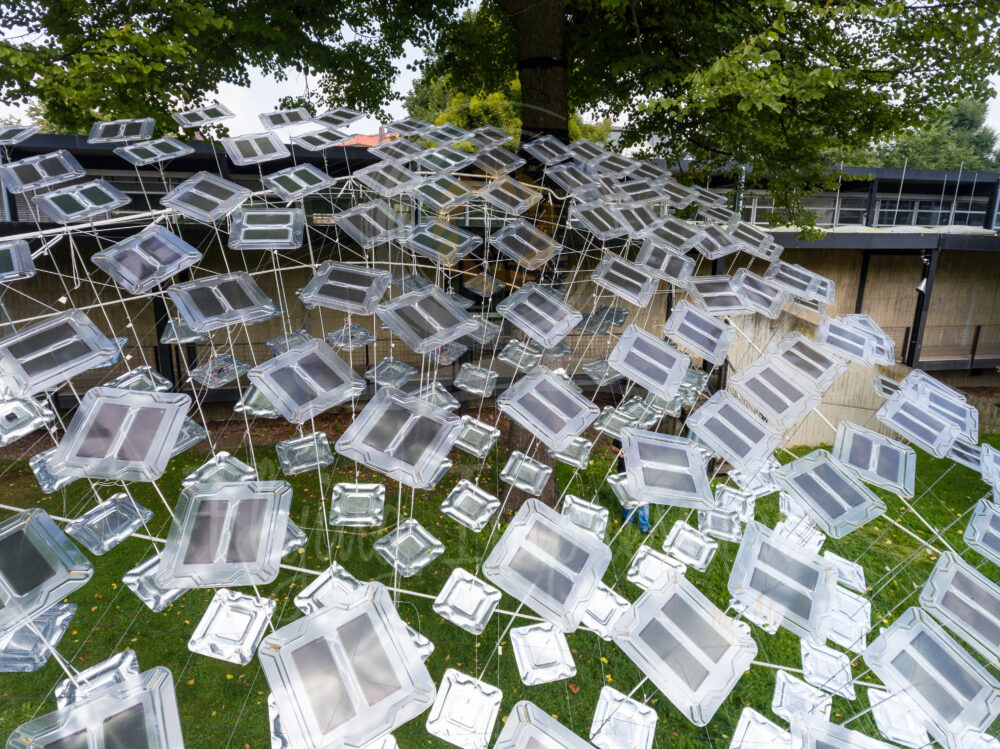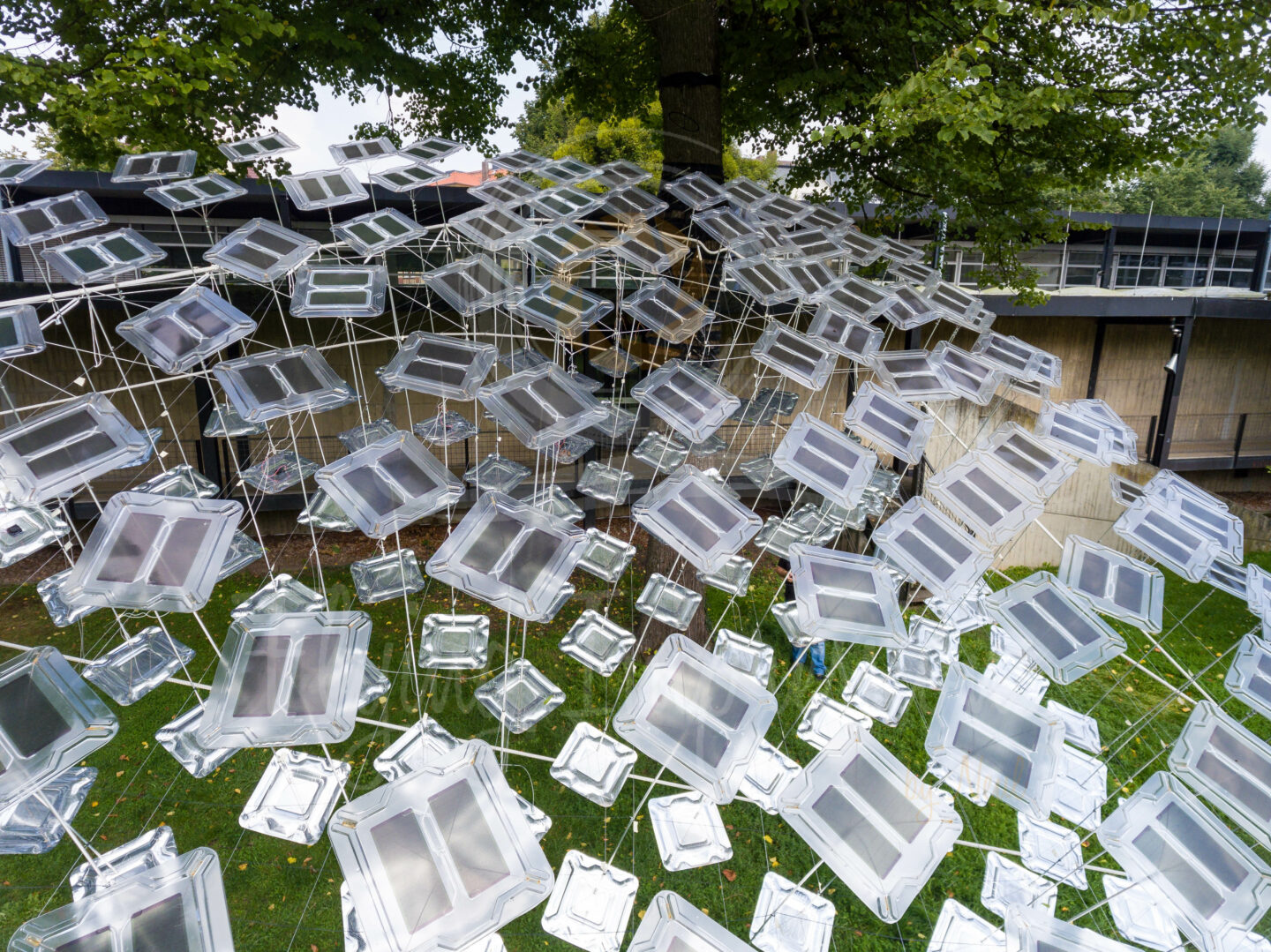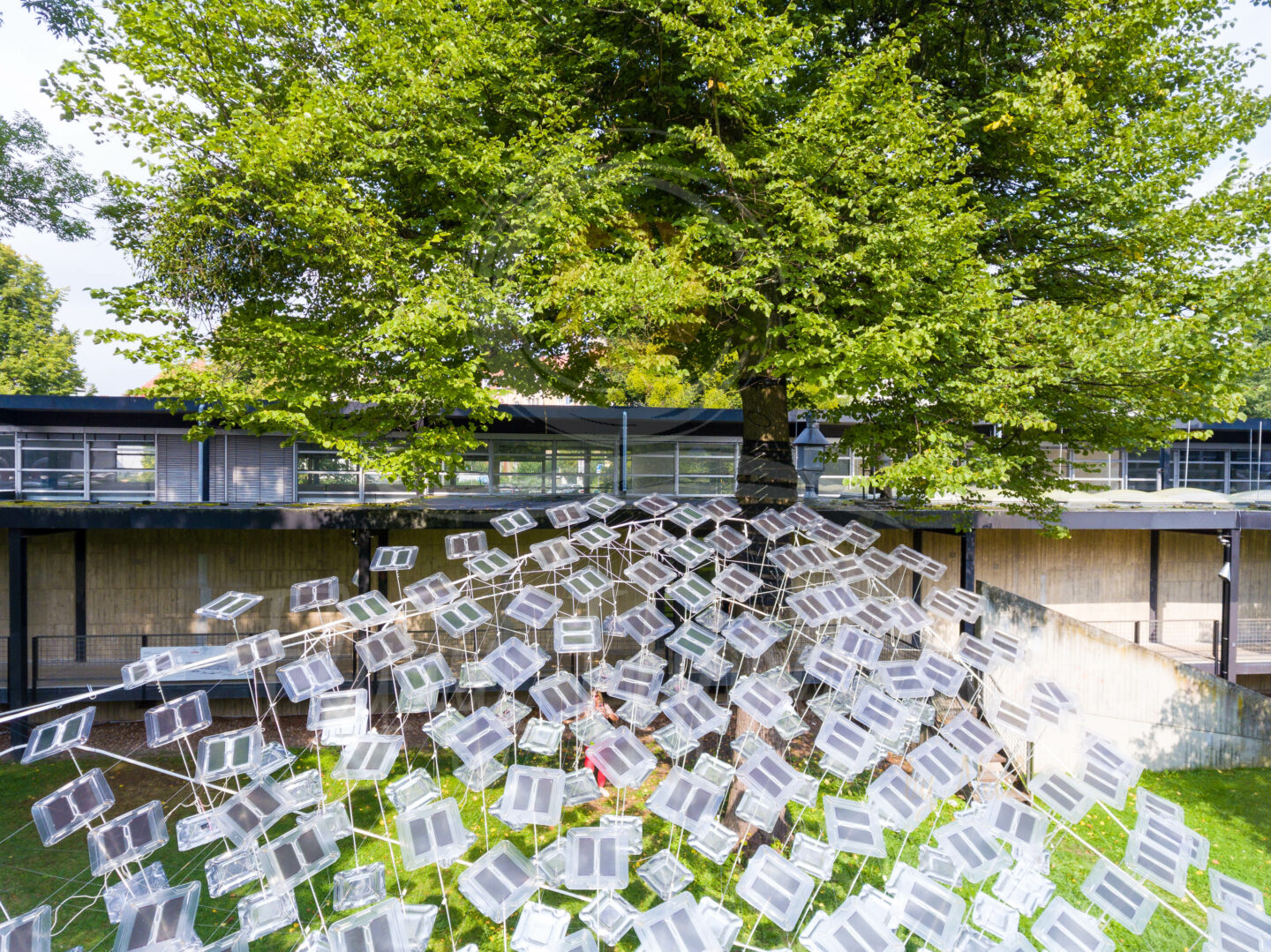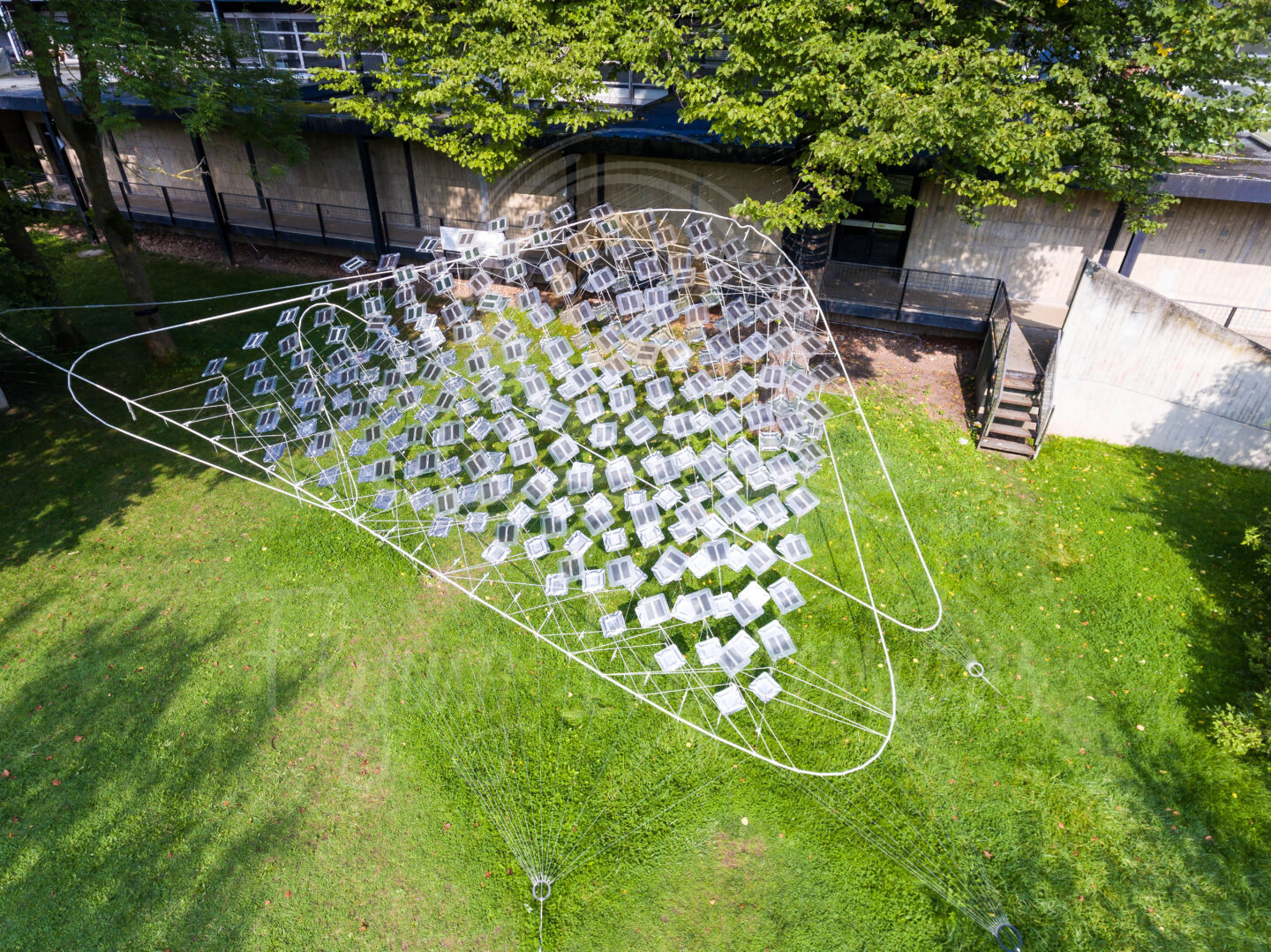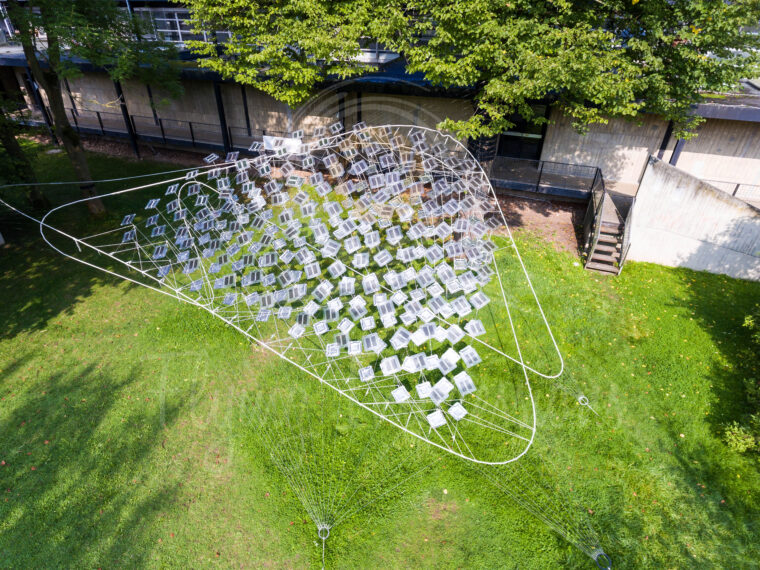Sep 2017 - Kassel, Germany
Solar Spline: Lightweight architectural construction uses printed organic photovoltaic modules
Partner
AiD Architecture
FEATURES
Solution: 300 OPV modules
Integration: sandwich solution made of a transparent with a reflective film coating
Structure: cable mesh and aluminum tubes
